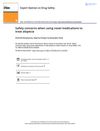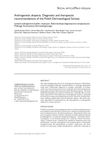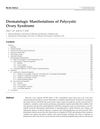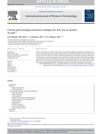TLDR Hair loss in men and women can be treated with medications and therapies, showing improvement after 6 months.
Androgenetic alopecia (AGA) is a common form of hair loss affecting both men and women, characterized by genetic and androgen sensitivity. Treatments include minoxidil, spironolactone for women, and 5-alpha-reductase inhibitors like finasteride and dutasteride for men. Combination therapies are more effective, with improvements typically seen after 6 months. AGA is non-scarring and partially reversible, with prevalence increasing with age. Proper diagnosis is crucial, and patient counseling is important to manage treatment expectations. Additional treatments like low-level laser therapy and surgical options such as hair transplantation are available, though they vary in effectiveness and accessibility.
May 2023 in “Clinical, Cosmetic and Investigational Dermatology” More personalized and effective treatments for androgenetic alopecia are needed.
 23 citations
,
October 2018 in “Expert Opinion on Drug Safety”
23 citations
,
October 2018 in “Expert Opinion on Drug Safety” Consider benefits and risks of new alopecia treatments for safety.
 2 citations
,
January 2018 in “Dermatology Review/Przegląd Dermatologiczny”
2 citations
,
January 2018 in “Dermatology Review/Przegląd Dermatologiczny” Use trichoscopy to diagnose hair loss; treat with minoxidil, finasteride, or dutasteride; consider platelet-rich plasma and spironolactone.
 76 citations
,
January 2007 in “American Journal of Clinical Dermatology”
76 citations
,
January 2007 in “American Journal of Clinical Dermatology” Women with PCOS often have skin problems like excessive hair, acne, hair loss, and dark patches, which can be treated with hormonal and non-hormonal therapies.
 March 2025 in “JAAD reviews.”
March 2025 in “JAAD reviews.” Bicalutamide can reduce female pattern hair loss, especially in those with certain conditions, but has limited effects on other hair loss types.
 15 citations
,
January 2019 in “International Journal of Women's Dermatology”
15 citations
,
January 2019 in “International Journal of Women's Dermatology” Early treatment helps stop hair loss in women of color.





